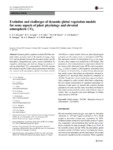Por favor, use este identificador para citar o enlazar este ítem:
http://www.alice.cnptia.embrapa.br/alice/handle/doc/1053980Registro completo de metadatos
| Campo DC | Valor | Lengua/Idioma |
|---|---|---|
| dc.contributor.author | REZENDE, L. F. C. | pt_BR |
| dc.contributor.author | ARENQUE, B. C. | pt_BR |
| dc.contributor.author | AIDAR, S. de T. | pt_BR |
| dc.contributor.author | MOURA, M. S. B. de | pt_BR |
| dc.contributor.author | RANDOW, C. V. | pt_BR |
| dc.contributor.author | TOURIGNY, E. | pt_BR |
| dc.contributor.author | MENEZES, R. S. C. | pt_BR |
| dc.contributor.author | OMETTO, J. P. H. B. | pt_BR |
| dc.date.accessioned | 2016-10-03T11:11:11Z | pt_BR |
| dc.date.available | 2016-10-03T11:11:11Z | pt_BR |
| dc.date.created | 2016-10-03 | pt_BR |
| dc.date.issued | 2016 | pt_BR |
| dc.identifier.citation | International Journal of Biometeorology, v. 60, p. 945-955, 2016. | pt_BR |
| dc.identifier.uri | http://www.alice.cnptia.embrapa.br/alice/handle/doc/1053980 | pt_BR |
| dc.description | Dynamic global vegetation models (DGVMs) simulate surface processes such as the transfer of energy, water, CO2, and momentum between the terrestrial surface and the atmosphere, biogeochemical cycles, carbon assimilation by vegetation, phenology, and land use change in scenarios of varying atmospheric CO2 concentrations. DGVMs increase the complexity and the Earth system representation when they are coupled with atmospheric global circulation models (AGCMs) or climate models. However, plant physiological processes are still a major source of uncertainty in DGVMs. The maximum velocity of carboxylation (Vcmax), for example, has a direct impact over productivity in the models. This parameter is often underestimated or imprecisely defined for the various plant functional types (PFTs) and ecosystems. Vcmax is directly related to photosynthesis acclimation (loss of response to elevated CO2), a widely known phenomenon that usually occurs when plants are subjected to elevated atmospheric CO2 and might affect productivity estimation in DGVMs. Despite this, current models have improved substantially, compared to earlier models which had a rudimentary and very simple representation of vegetation–atmosphere interactions. In this paper, we describe this evolution through generations of models and the main events that contributed to their improvements until the current state-of-the-art class of models. Also, we describe some main challenges for further improvements to DGVMs. | pt_BR |
| dc.language.iso | eng | eng |
| dc.rights | openAccess | eng |
| dc.subject | DGVMs | pt_BR |
| dc.subject | Global changes | pt_BR |
| dc.subject | Mudanças Climáticas | pt_BR |
| dc.subject | Maximumvelocity of carboxylation | pt_BR |
| dc.title | Evolution and challenges of dynamic global vegetation models for some aspects of plant physiology and elevated atmospheric CO2. | pt_BR |
| dc.type | Artigo de periódico | pt_BR |
| dc.date.updated | 2017-01-23T11:11:11Z | pt_BR |
| dc.subject.thesagro | Vegetação | pt_BR |
| dc.subject.nalthesaurus | Acclimation | pt_BR |
| riaa.ainfo.id | 1053980 | pt_BR |
| riaa.ainfo.lastupdate | 2017-01-23 | pt_BR |
| dc.identifier.doi | 10.1007/s00484-015-1087-6 | pt_BR |
| dc.contributor.institution | L. F. C. REZENDE, INPE; B. C. ARENQUE, USP; SAULO DE TARSO AIDAR, CPATSA; MAGNA SOELMA BESERRA DE MOURA, CPATSA; C. VON RANDOW, INPE; E. TOURIGNY, INPE; R. S. C. MENEZES, UFPE; J. P. H. B. OMETTO, INPE. | pt_BR |
| Aparece en las colecciones: | Artigo em periódico indexado (CPATSA)  | |
Ficheros en este ítem:
| Fichero | Descripción | Tamaño | Formato | |
|---|---|---|---|---|
| magna4.pdf | 797.14 kB | Adobe PDF |  Visualizar/Abrir |









